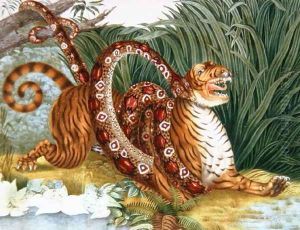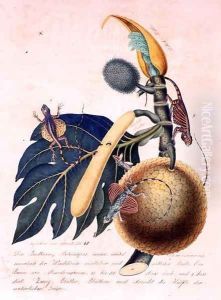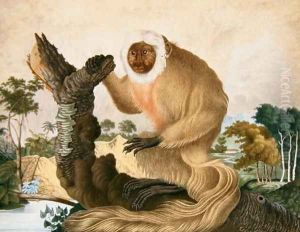Aloys Zotl Paintings
Aloys Zötl, born on May 13, 1803, in Freistadt, Austria, was a painter best known for his detailed watercolor illustrations of animals. He was a master dyer by profession, running his own dye works, and pursued his interest in art alongside his business. His work was not widely recognized in his lifetime, and he focused on his artistic endeavors mostly in private.
Zötl's fascination with the natural world led him to begin a project he called 'Beasts of the World' ('Bestiarium') in 1831, at the age of 28. This project was a personal one, consisting of a series of watercolor paintings depicting a wide range of animals, both real and mythological. His detailed illustrations represent a blend of scientific interest and a penchant for the fantastical, as he included creatures such as dragons and unicorns alongside real species.
Despite his considerable talent and the unique quality of his work, Zötl's art remained largely unknown during his lifetime, and it was only after his death on January 14, 1887, that his contributions to art were rediscovered and appreciated. The revival of interest in his work was largely thanks to surrealist artist André Breton, who came across Zötl's illustrations in the 1950s and recognized their significance. Breton's promotion of Zötl's work brought it to the attention of the artistic community and the public.
Today, Aloys Zötl is celebrated for his meticulous and imaginative representations of the animal kingdom. His work is considered an important precursor to Surrealism and is appreciated for its detailed, scientific approach as well as its whimsical and imaginative elements. His watercolors are held in various collections and have been exhibited in art museums, offering a glimpse into the mind of an artist who merged the realms of reality and fantasy with exceptional skill.


